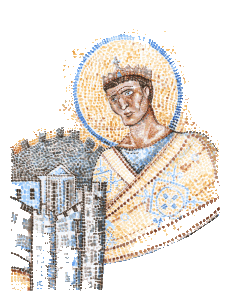Education in Byzantium (Eastern Roman Empire)
5th Grade History-Subjects from the Byzantum history-Chapter Z (Greek educational system)
 |
Materials for the lessonTeacher brings to class a copy of Homer’s Odyssey or Iliad, a copy of Aesop’s Fables, a copy of the Old and/or the New Testament and a 50-60 cm long wooden stick. Map of Byzantium – in one of its phases – is hung on a class wall. Teacher asks students to try to read both the original text’s Greek as well as its contemporary version. |
|
|
Layout of classroomStudents are asked to sit on the floor (provided there are sitting pillows or a carpet). Teacher hands out the copies of the books to the students and asks them to flip through their pages. The teacher holds on to the stick.Mother accompanies her child to school ( from St. Nikolaos’ icon, Holy Monastery of Patmos, Patmos island) |
|
|
Phase 1Teacher asks the students whether they are familiar with any of the themes in the books that were distributed to them.They are explained that these four books were part of the curriculum during great parts of education in Byzantium along with others of course.Students are asked to share the books. Each book is read by 4 or 5 students. Copies of books were a rather scarce commodity during that era.They are asked to think of difficulties Byzantine kids might have had at school given the fact that a number of technological achievements we now enjoy were not in existence at that time. |
|
|
Phase 2Students are told that during Byzantine times only boys went to schools. Schools were either private or under Christian Church’s supervision. Girls were not allowed to go to school and were instead home-schooled in knitting, weaving and cooking. Teacher asks the students about their opinion on the above-mentioned historical fact. Teacher aims at bringing to fore that such a policy would constitute discrimination in our days.Teacher holds on to the wooden stick and informs the students that corporal punishment was allowed. He discusses with the students the meaning of the saying «Ο μη δαρείς ου παιδεύεται» (“Whoever does not get beaten will not learn”). He then provokes an open discussion within the framework of the use of violence in education and children’s rights.Students and Philosophers, Ioannis Skylitzis Chronography (National Library of Madrid)Phase 3
|

 SmartOWL
SmartOWL